Power Query: Bring it to the Table
4 October 2017
Welcome to our Power Query blog. This week I look at how to create a table in M code.
I like finding ways to save time. That’s why I get someone else to write this. So when I come across a method to create data quickly, then that makes me very happy. This particular method of creating data is ideal for those scenarios where I don’t want Excel users to change any values. Since the values are specified in M code, the only way to change them is to change the query.
The Microsoft description of the #table() function is shown below:
- #table(columns as any, rows as any) as any
- Creates a table value from columns (columns) and the list (rows) where each element of the list is an inner list that contains the column values for a single row; columns may be a list of column names, a table type, a number of columns or null.
This all sound very simple…or not. What I need is an example. In an empty workbook (nothing up my sleeves), I elect to create a new, empty query (Blank Query):
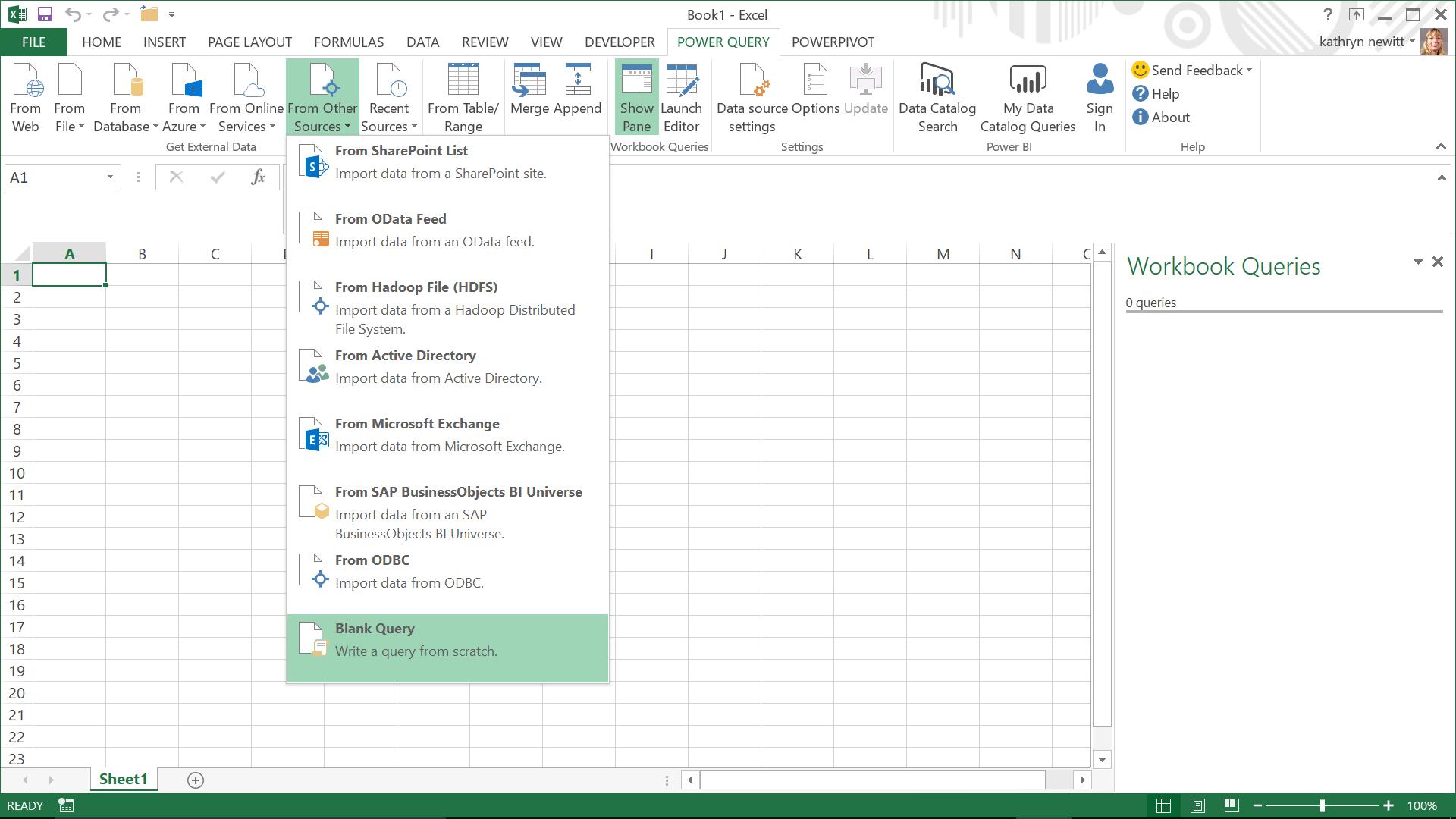
In the Query Editor, I choose the Advanced Editor option from the ‘Home’ tab.
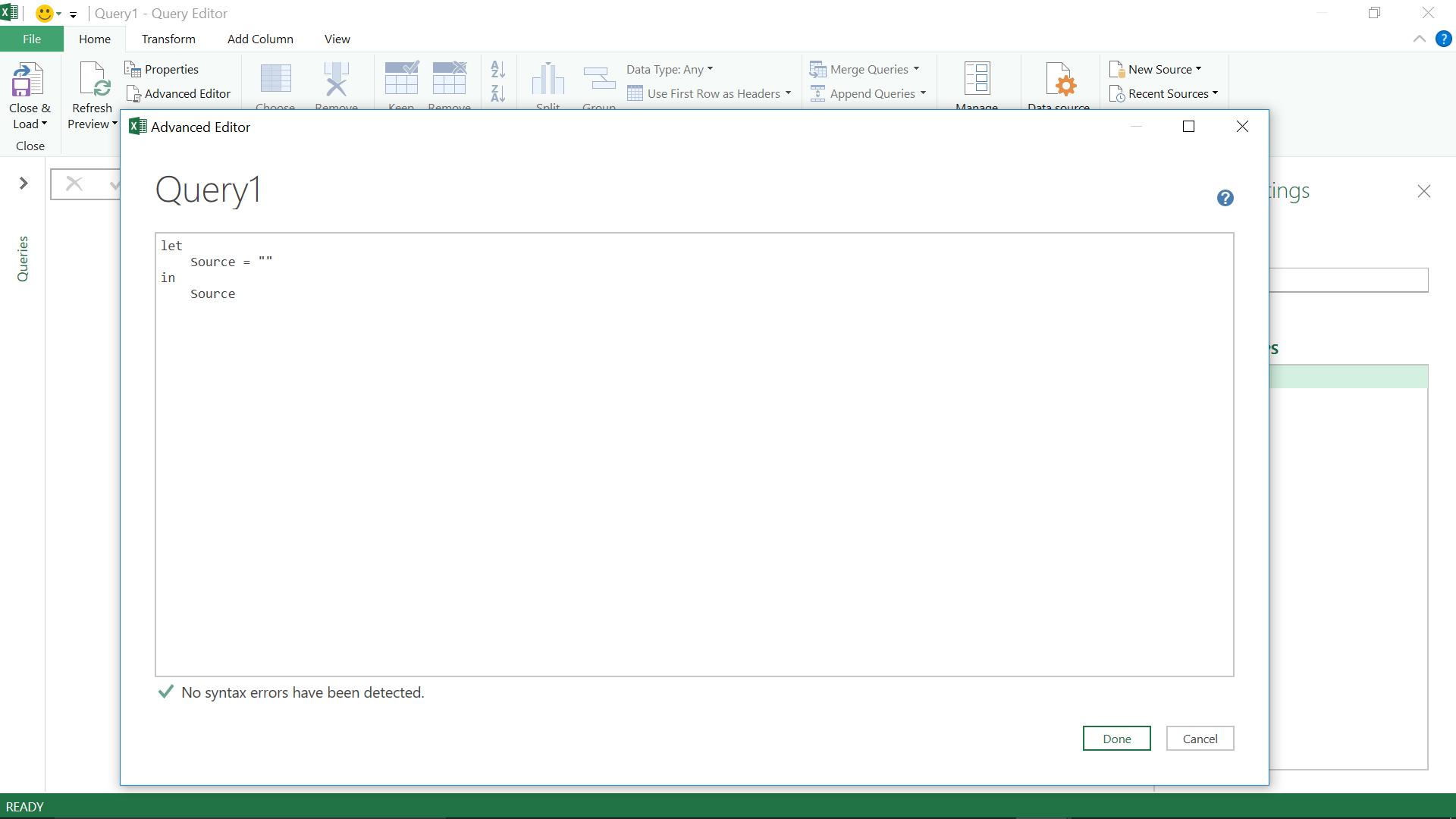
I begin with something simple: my aim is to create a small table with some basic employee data, none of which is genuine…
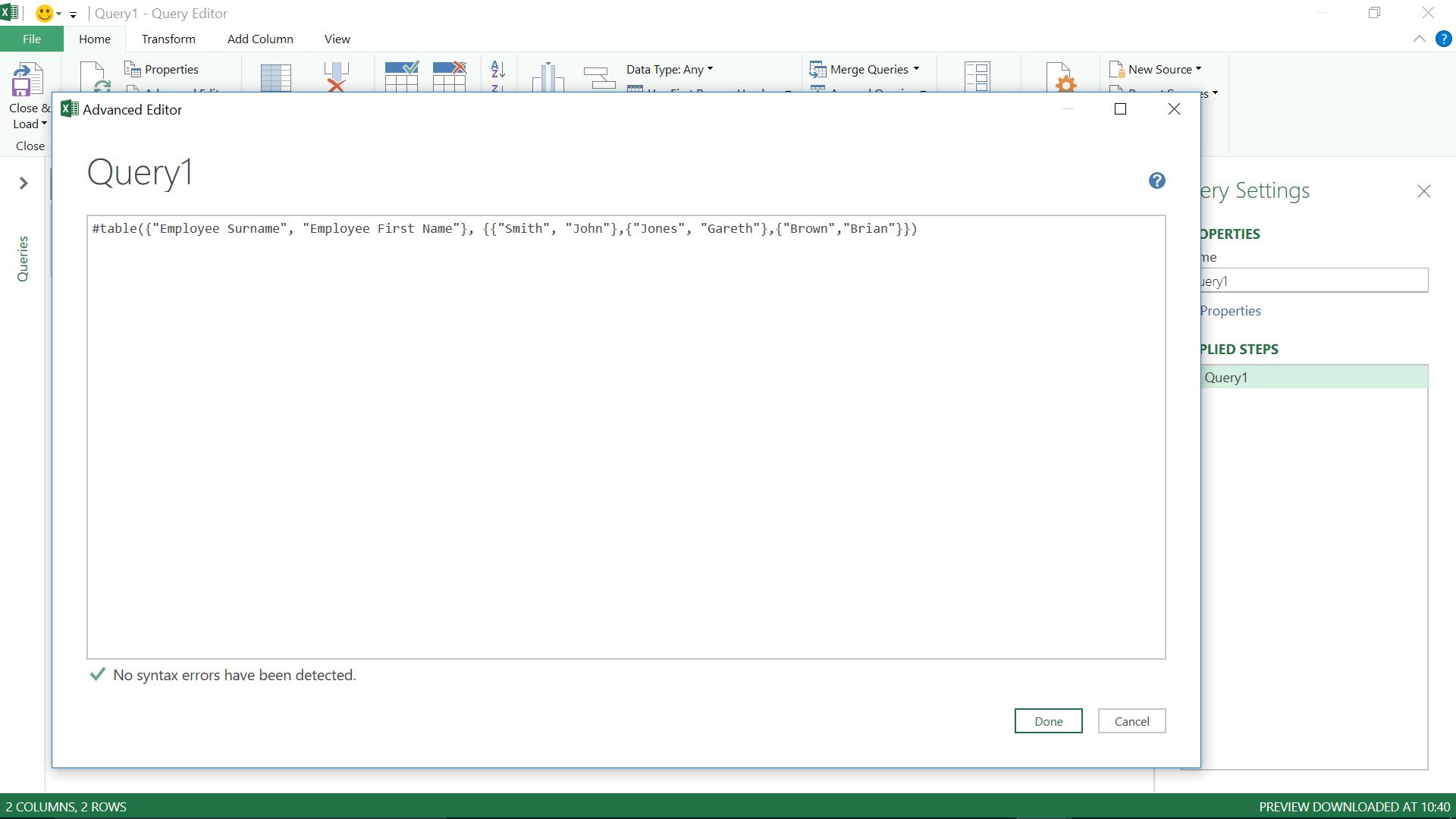
My M code is as follows
#table({"Employee Surname", "Employee First Name"}, {{"Smith", "John"},{"Jones", "Gareth"},{"Brown","Brian"}})
This means create a table with two columns (these are in a list) Employee Surname and Employee First Name. Then, the values for each pair of columns are provided three times. Each set of data (surname value and first name value) is grouped into a list and all three pairs are grouped into a larger list. The list is indicated in each case by the use of curly brackets { }. This makes the ‘inner list’ in the description a little clearer, as it just means that I am specifying a list of values for each row, and the rows belong to a list too. I select ‘Done’ to create my table.
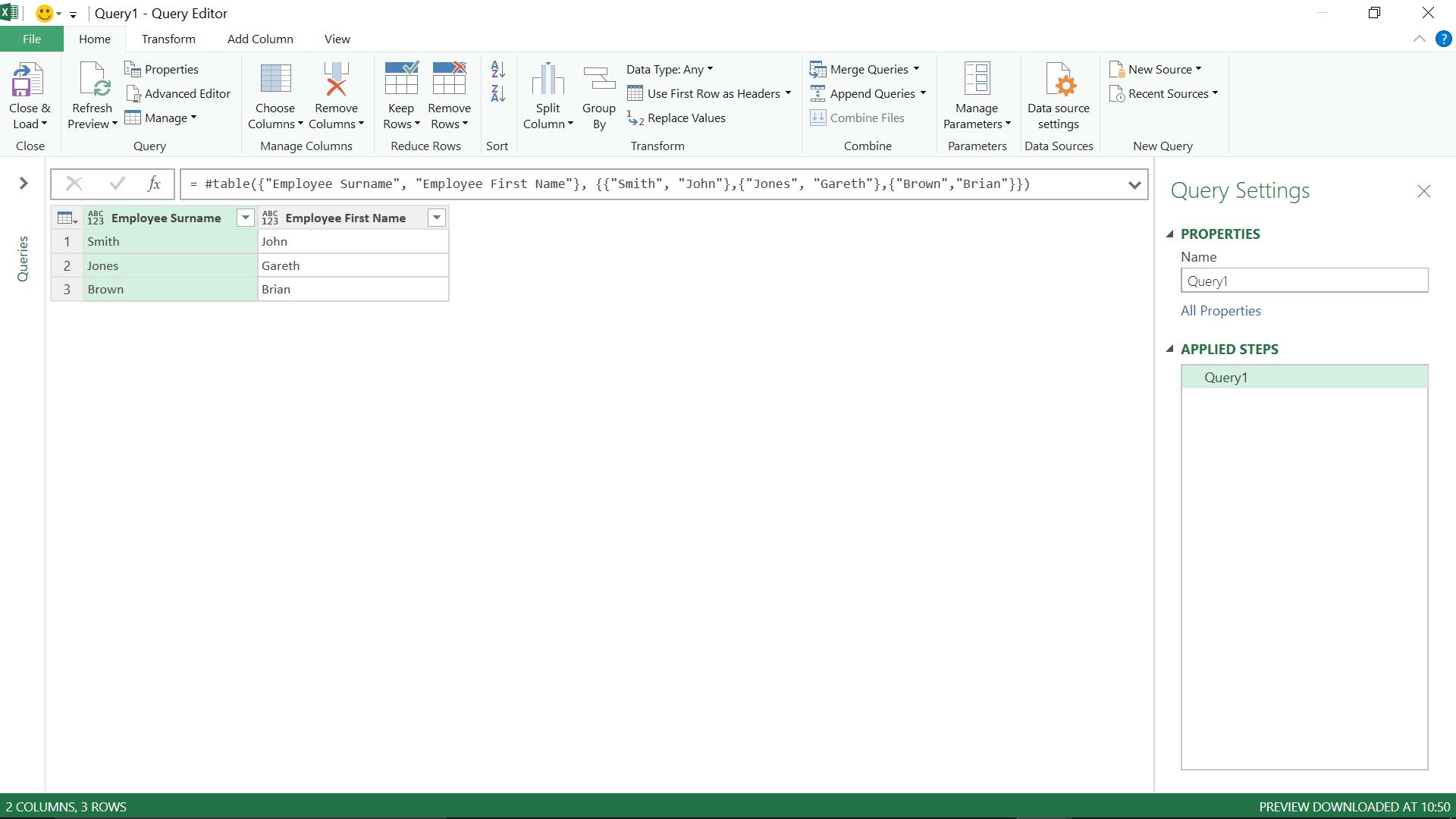
The columns in the example above use text values, but I can use other data types in my columns; it depends what I want to create. I decide to add a start date for my three employees. For this I will use another function, #date
#date(yearas number, month as number, day as number) as date- Creates a date value from year (
year), month (month), and day (day). Raises an error if these are not true:- 1≤ year ≤ 9999
- 1≤ month ≤ 12
- 1 ≤ day ≤ 31
This function is easy to follow, so I go back into the Advanced Editor and expand my lists, viz.
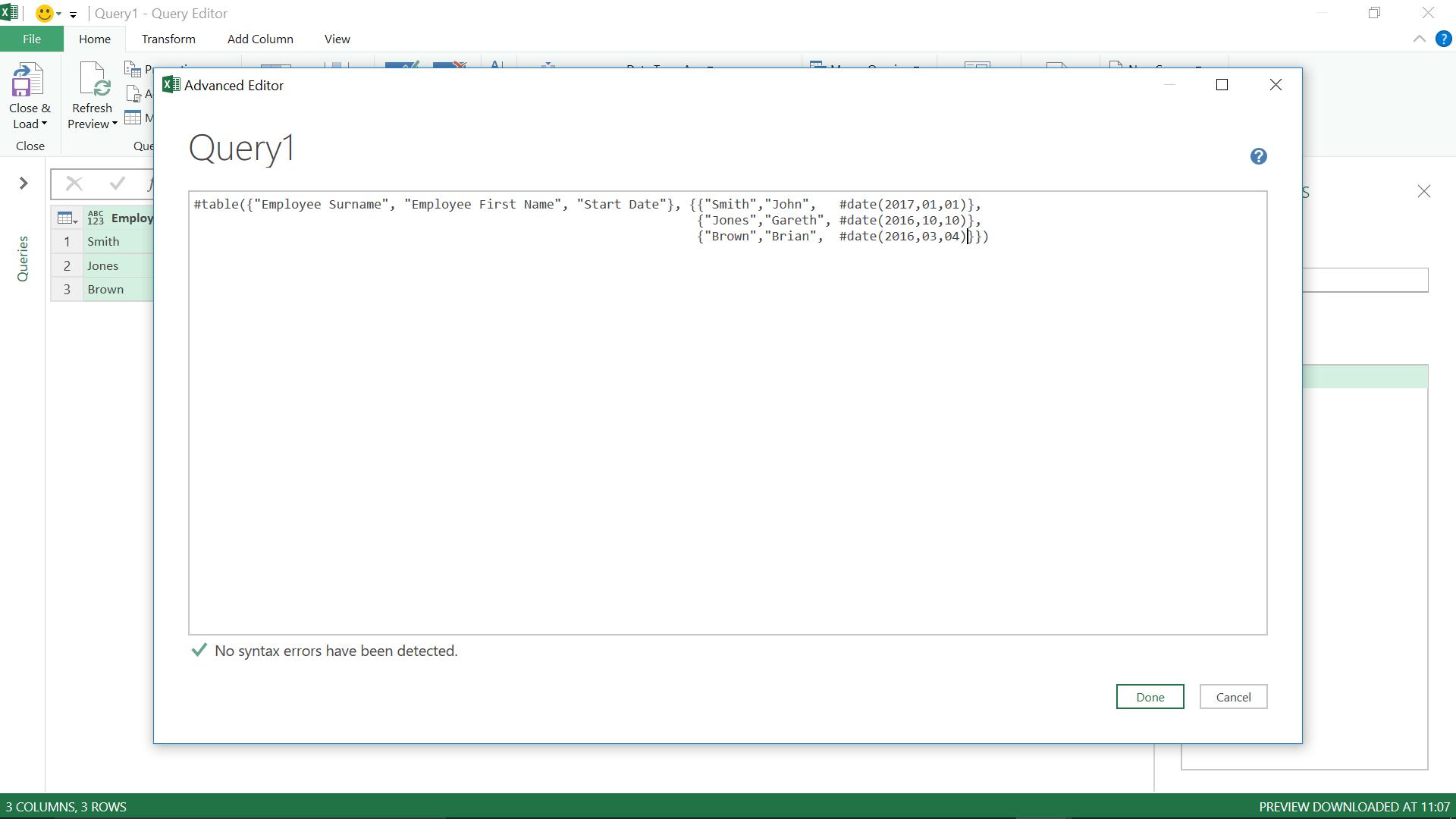
As the line is getting longer, I organise my M code so that I can follow where the lists are constructed to make it easier for me to add to my table. (I covered basic M code syntax and how to make it easier to read in M-Body Personified.
Once I am happy with what I have added, I click ‘Done’.
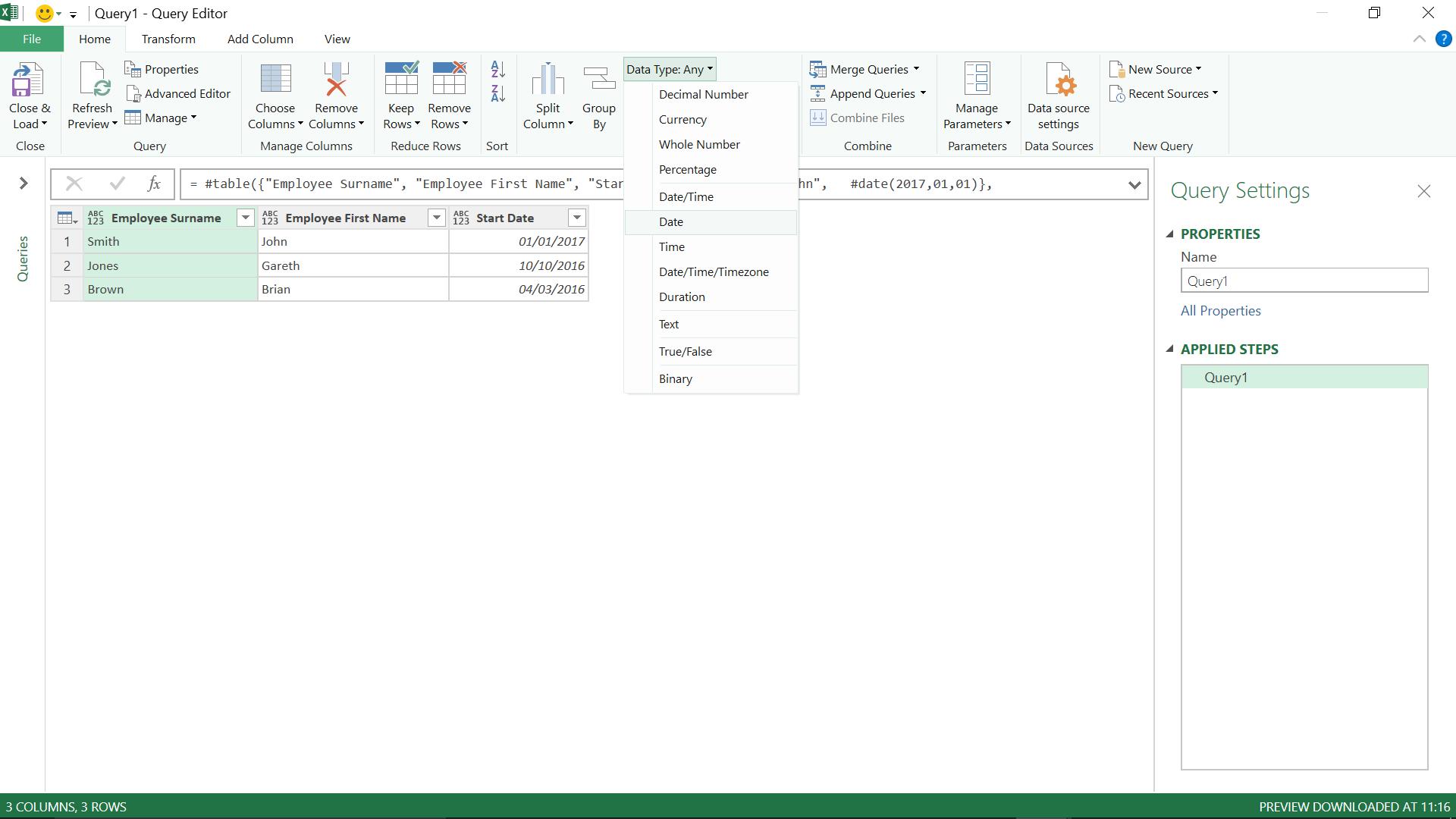
Power Query has added my column as type ‘Any’, so I opt to change it to a date. However, I’d really like this to happen when I create my table, rather than adding another step, and there is a way to specify the data type. The syntax is slightly different, as the method of defining the table changes. Instead of using a list of column names,
#table({"Employee Surname", "Employee First Name", "Start Date"}
I specify the name and type for each column (and the table type) as follows:
#table(type table [#"Employee Surname"=text, #"Employee First Name"=text, #"Start Date"=date]
I go back to the Advanced Editor and amend my code:
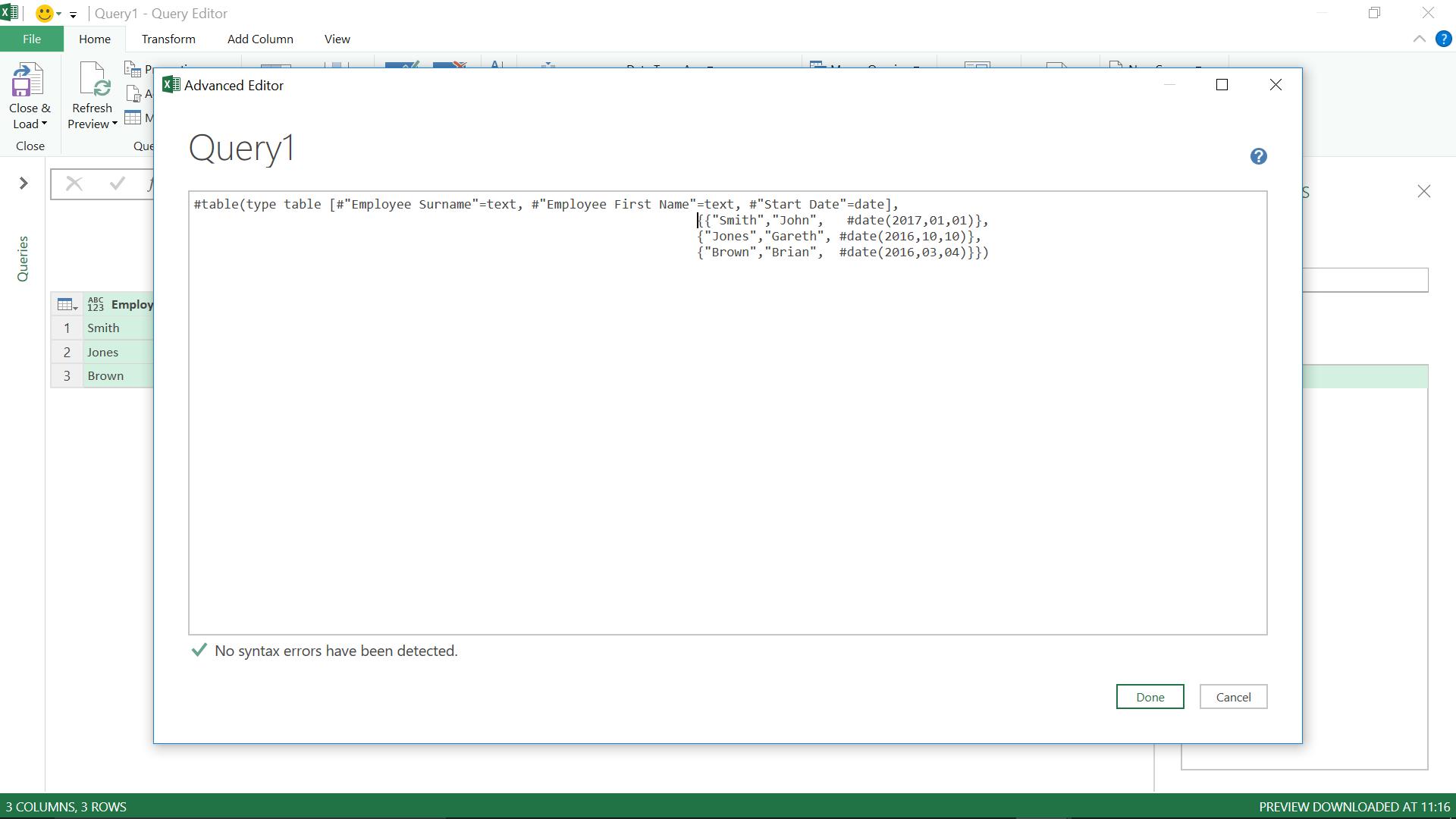
I choose ‘Done’ to make my changes.
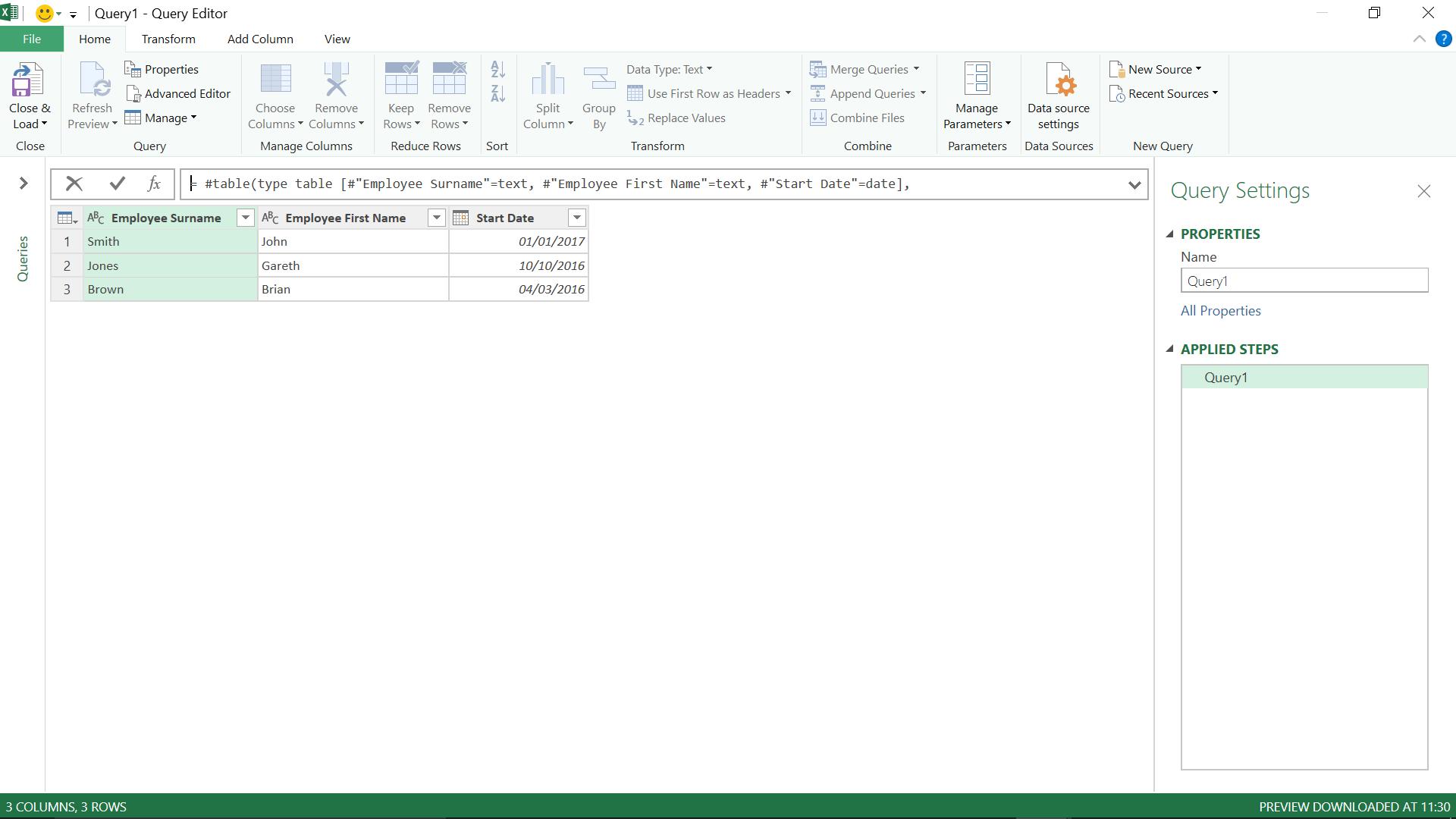
All my columns in my newly created table have been given the correct type without the need for a ‘Change Type’ step. Easy when you know how…
Want to read more about Power Query? A complete list of all our Power Query blogs can be found here.
Come back next time for more ways to use Power Query!

